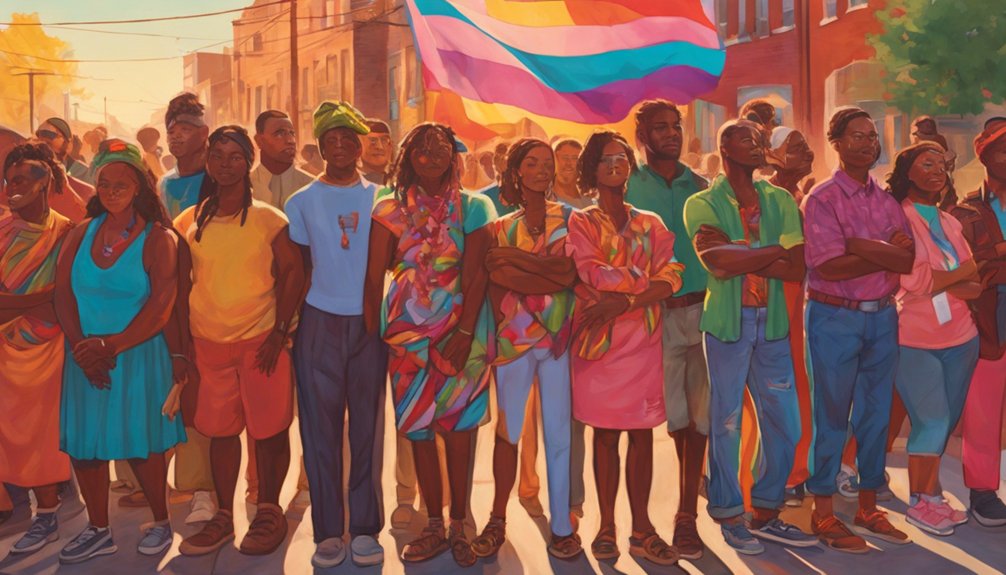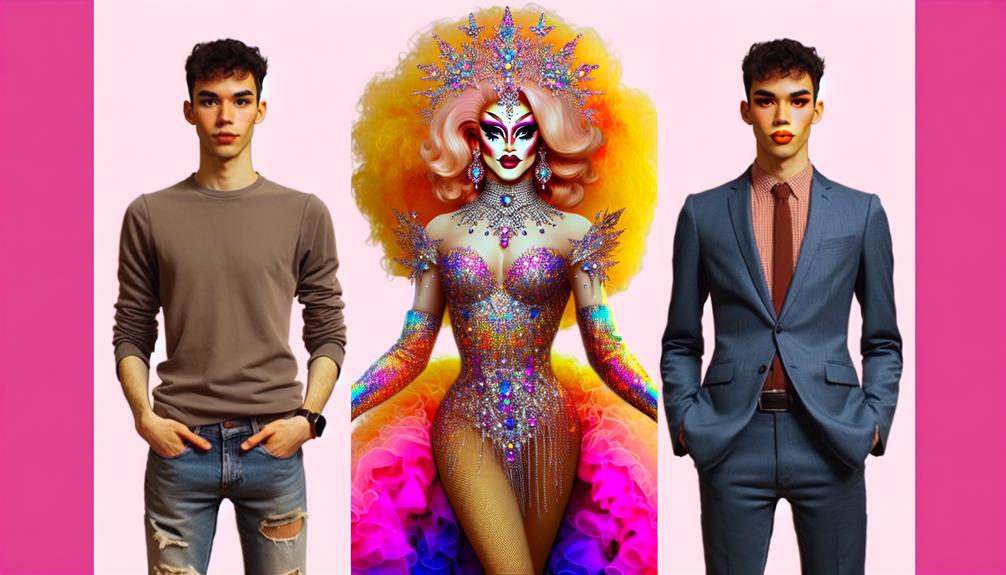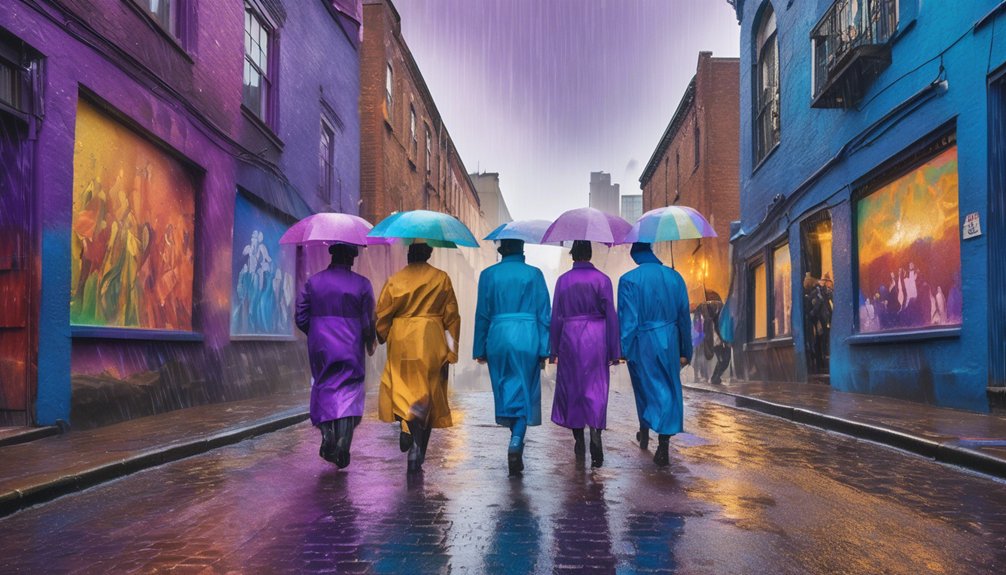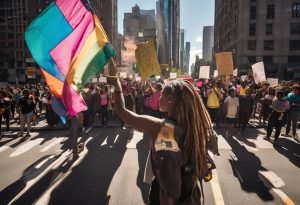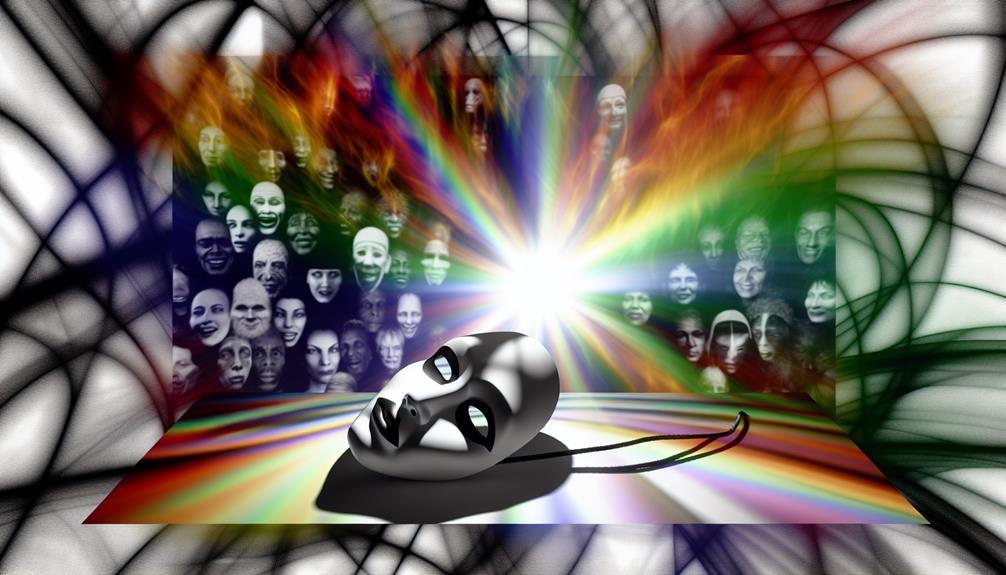
Uncover the truth about queerbaiting, a tactic that teases LGBTQ+ themes without delivering, and explore its impact on the community.
Table of Contents
ToggleImagine watching a show where the creators hint at a queer relationship, but it never really happens. That’s queerbaiting, a tactic where media teases LGBTQ+ themes without delivering the real deal. It’s a bit like being promised a cake but only getting the aroma. Fans get excited, hoping for authentic representation, only to feel let down. This practice is more common than you might think and has roots in past restrictions on LGBTQ+ content. Curious about how this impacts the community and why it’s stirring up conversations for change? There’s much more to uncover about this intriguing topic.
Key Insights
- Queerbaiting is the practice of suggesting LGBTQ+ relationships without providing genuine representation.
- It exploits the desire for authentic LGBTQ+ narratives, leading to audience disappointment.
- Queerbaiting marginalizes the queer community with shallow portrayals instead of offering meaningful stories.
- The practice originated during the Hays Code era and became prominent in the early 2010s.
- Queerbaiting faces backlash as audiences demand accountability and true representation from creators.
Dora’s Deep Dive Podcast – What Is Queerbaiting?
Understanding Queerbaiting
Understanding queerbaiting starts with recognizing it as a ploy where creators hint at LGBTQ+ relationships to draw in audiences without actually delivering genuine representation. You might notice this when a TV show teases a potential same-sex relationship, keeping you hooked with subtle clues or moments, but never truly developing the relationship. This tactic lures the queer community with the promise of representation but often ends up disappointing when it doesn’t follow through.
Consider popular shows like *Supernatural* or *Stranger Things*. They’ve been called out for suggesting queer relationships or identities without providing meaningful storylines. This can feel like exploitation, as it dangles representation in front of LGBTQ+ viewers who long for authentic narratives. You’re left wanting more substance, more depth, and ultimately, real representation in the media you consume.
Queerbaiting isn’t just frustrating; it marginalizes the queer community further by offering shallow portrayals instead of genuine stories. Online fan communities have become vocal about these tactics, using platforms to demand accountability from creators. As you become more aware of queerbaiting, you’re better equipped to advocate for true representation that respects and reflects the diversity of LGBTQ+ lives and relationships.
Historical Context
Queerbaiting’s roots are deep, stretching back to periods when explicit LGBTQ+ portrayals were scarce. In the 1950s, the Hays Code placed strict limits on LGBTQ+ representation in media, forcing creators to use coded messages and subtext. This censorship laid the groundwork for today’s queerbaiting, where hints of queer relationships are used without real representation. For instance, during the Lavender Scare, political figures deployed similar tactics, exploiting societal fears around LGBTQ+ communities.
By the early 2010s, the term “queerbaiting” gained prominence in internet fandoms, with fans demanding more media accountability. Shows like “Supernatural” and “Sherlock” faced criticism for suggesting same-sex relationships without delivering on them. This frustration grew as social media amplified the voices of those seeking authentic LGBTQ+ representation, holding creators accountable for exploiting queer narratives for profit.
Here’s a quick look at key points:
| Period | Event/Concept | Impact on Queerbaiting |
|---|---|---|
| 1930s-1960s | Hays Code | Restricted LGBTQ+ representation |
| 1950s | Lavender Scare | Exploited fears, similar tactics |
| Early 2010s | Internet Fandoms | Term “queerbaiting” emerged |
| Recent Years | Social Media Rise | Increased media accountability |
Understanding this history helps in recognizing the ongoing struggle for genuine representation.
Modern Examples

In the current media landscape, examples of queerbaiting continue to spark debate and frustration among audiences. You might have noticed this in popular shows and films, where hints of LGBTQ+ representation appear but aren’t genuinely investigated. For instance, *Stranger Things* has left queer fans puzzled with the ambiguous dynamic between characters like Steve and Robin. Despite hints, their potential queer relationship never truly develops.
Consider these examples:
- Billie Eilish faced accusations of queerbaiting in her “Lost Cause” music video, where suggestive interactions among women didn’t translate into any real LGBTQ+ narratives.
- Avengers: Endgamebriefly referenced a gay character, which was criticized for lacking substantial representation, leaving queer fans feeling sidelined.
- In contrast, The Owl Househas become a guiding light of authentic LGBTQ+ representation, fully embracing queer characters and relationships.
Even actors face these challenges. Kit Connor, known for *Heartstopper*, was accused of queerbaiting due to his engagement with queer aesthetics, despite not publicly identifying his sexuality. This highlights the pressure on young actors to define their identity publicly, showcasing the complexities surrounding genuine representation versus perceived exploitation in modern media.
Impact on LGBTQ+ Community
When you watch a show hoping for genuine LGBTQ+ representation, and it turns out to be just a teasing gesture, the disappointment can be profound. Queerbaiting leads to frustration within the LGBTQ+ community. You might feel hopeful as characters hint at same-sex relationships, only to realize it’s a marketing ploy rather than authentic storytelling.
This kind of representation can make you feel excluded. You see your identity superficially validated, but the meaningful narratives you crave are missing. It’s like being offered an empty promise. When creators exploit your identity for publicity without genuine commitment, it can hurt and alienate.
Such actions often provoke backlash from the community. Fans are vocal, advocating for accountability and demanding respect. They want creators to offer genuine portrayals of queer relationships. This backlash isn’t just about criticism; it’s about pushing for change and better representation.
Queerbaiting also damages trust. When media commodifies your identity without offering real stories, it can feel like a betrayal. As a member of the LGBTQ+ community, you might find yourself questioning the credibility of creators who rely on stereotypes rather than exploring the rich, diverse realities of queer lives.
Calls for Authenticity
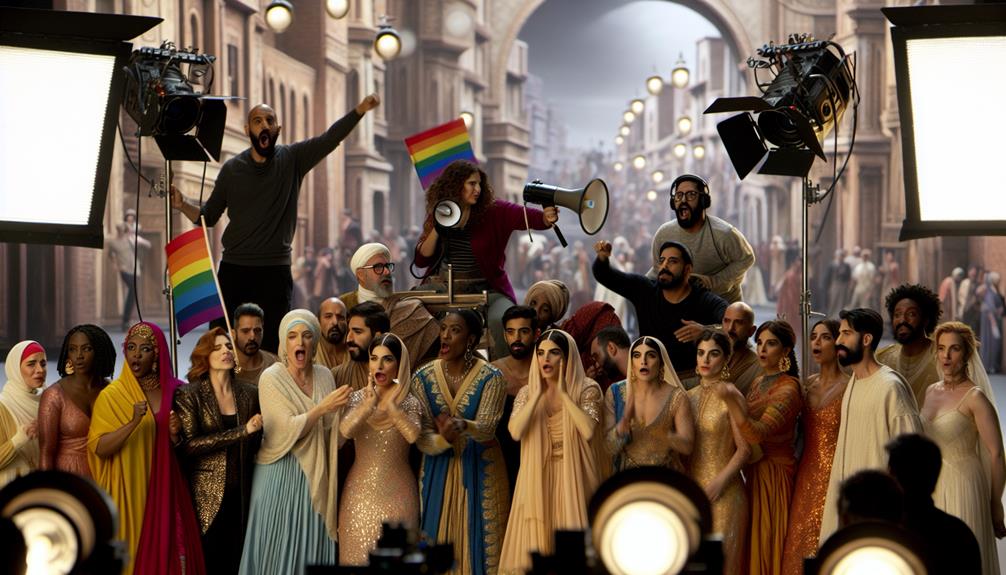
Many voices are calling for authenticity in media representation, urging creators to move beyond mere hints and stereotypes. When you see a show or movie that teases LGBTQ+ relationships without delivering, it feels like a missed opportunity for genuine queer representation. This is what critics call queerbaiting. It’s not just about what’s shown on screen, but also how it affects the LGBTQ+ community.
Authentic representation matters because:
- It helps break down stereotypes and fosters understanding.
- It creates a sense of belonging for LGBTQ+ individuals.
- It influences societal attitudes positively.
Activists and community members push for more genuine portrayals of LGBTQ+ relationships, arguing that real stories can change perceptions and promote acceptance. Social media has given these calls for authenticity a louder voice, demanding accountability from creators who use queerbaiting as a marketing tool without offering true representation.
Research shows that especially younger audiences are tired of superficial gestures and want meaningful stories. When queer representation is done right, it doesn’t just entertain; it educates and connects. So, when creators prioritize authenticity over commercial gain, they don’t just tell stories—they help build a more inclusive community.
Frequently Asked Questions
How Is Queerbaiting Harmful?
Queerbaiting’s harmful because it tricks you into expecting genuine LGBTQ+ representation, only to leave you disappointed. It exploits your hope for visibility, turning your identity into a marketing tool. When creators dangle the possibility of queer relationships without follow-through, it reinforces stereotypes and marginalization. This practice leaves you feeling excluded and frustrated, undermining the progress made in authentic representation and reducing complex identities to superficial gestures.
Why Is Queerbaiting Good?
You see, some argue that queerbaiting has positive effects. It can spark conversations about LGBTQ+ issues, leading to more awareness. When media hints at queer relationships, it might attract diverse audiences, opening doors for future genuine representations. Plus, it can push companies to see the economic value of LGBTQ+ content, prompting more investment. Fans often create their own stories, celebrating queer identities, which can gradually shift societal norms towards acceptance.
What Is the Meaning of Straight Baiting?
Straight baiting involves suggesting heterosexual relationships to attract straight audiences, but without genuine representation. Imagine watching a show hinting at a romance between two characters, only for it to never materialize. This tactic can mislead viewers, perpetuating stereotypes and reinforcing traditional narratives. It frustrates audiences who crave authentic stories. Just like queerbaiting, it’s a marketing strategy that prioritizes hype over meaningful representation, leaving you wanting more genuine content.
What Is Queerbaiting Urban Dictionary?
Envision this: You’re watching a TV show, and two characters keep sharing these intense, lingering glances. You think, “Maybe they’ll ultimately represent us.” But they never do. That’s queerbaiting, as Urban Dictionary puts it. Media teases LGBTQ+ relationships to grab your attention, but doesn’t follow through. It’s like seeing a rainbow in the desert—promising, yet ultimately unfulfilling. You deserve stories that genuinely reflect diverse identities, not just hints.
Conclusion
You now understand queerbaiting and its impact on the LGBTQ+ community. Did you know that a 2020 survey found that 56% of LGBTQ+ viewers felt misled by shows hinting at queer relationships that never materialized? This statistic highlights the frustration and disappointment many feel. It’s essential for media creators to move beyond teasing and offer genuine representation. By doing so, they can foster trust and create stories that truly resonate with and reflect the diverse experiences of their audience.
Profile Author / Editor / Publisher
- Dora Saparow
- Dora Kay Saparow came out in a conservative Nebraskan town where she faced both misunderstanding and acceptance during her transition. Seeking specialized support, she moved to a big city, where she could access the medical, legal, and social resources necessary for her journey. Now, twelve years later, Dora is fully transitioned, happily married, and well-integrated into society. Her story underscores the importance of time, resources, and community support, offering hope and encouragement to others pursuing their authentic selves.
Latest entries
 Activism and ChangeOctober 26, 2025What Is the Social Conflict Theory of Transgender People?
Activism and ChangeOctober 26, 2025What Is the Social Conflict Theory of Transgender People? Activism and ChangeOctober 25, 2025Fleeing the USA: The Reality Behind Transgender Americans’ Search for Safety
Activism and ChangeOctober 25, 2025Fleeing the USA: The Reality Behind Transgender Americans’ Search for Safety Fashion and ExpressionOctober 25, 2025First Time With Lip Filler? Here’s What to Expect
Fashion and ExpressionOctober 25, 2025First Time With Lip Filler? Here’s What to Expect Featured PostsOctober 24, 2025After Facial Feminization Surgery: A Guide to Recovery and Beyond
Featured PostsOctober 24, 2025After Facial Feminization Surgery: A Guide to Recovery and Beyond
Tags: gay queerbaiting

